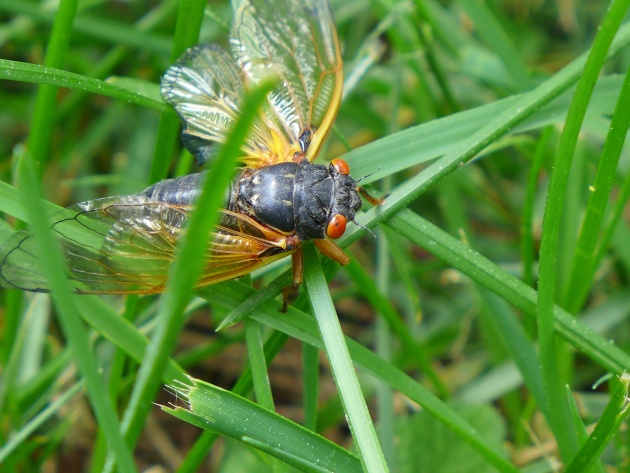
3 June 2016
I had to see them for myself.
Thousands and thousands of very loud bugs the size of my thumb with bright red eyes. They’ve spent 17 years of their youth underground to emerge as adults, en masse, for only 4-8 weeks. I didn’t want to miss the spectacle so I drove down to Washington, PA last Monday to see …
17-year cicadas (Magicicada sp.), unique to eastern North America, are so tasty to birds and mammals that they survive by emerging in overwhelming numbers on a prime-number cycle. There are 13 regional Broods with different cycles. This one, Brood V (i.e. Brood 5), lives in parts of West Virginia, Ohio and the bottom left corner of Pennsylvania. Click here for the list of all Broods and regions. Here’s the US map.
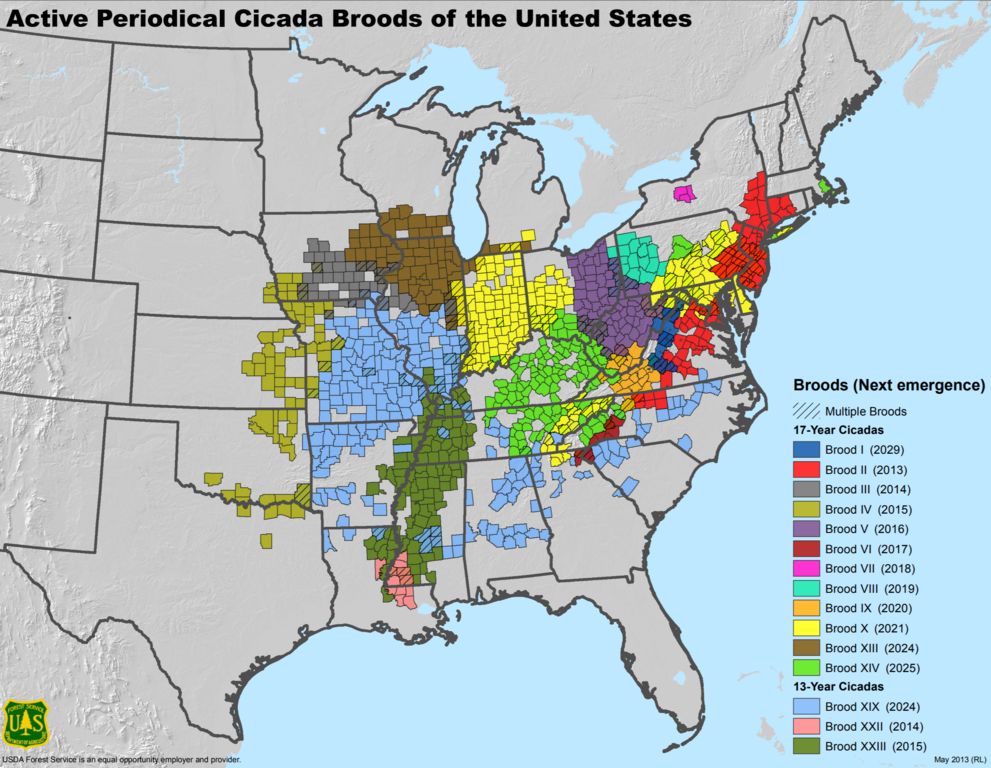
There are lots of cool facts about these bugs:
- In the spring of their 17th year the nymphs dig tunnels that stop just below the surface … and then they wait. The moment of their emergence depends on soil temperature and perhaps on their ability to hear each other making sounds that mean “I’m ready.” (read more here)
- They emerge at night and crawl up on trees, plants and walls to shed their exoskeletons and dry their wings. At this point they are very soft and tasty to predators.
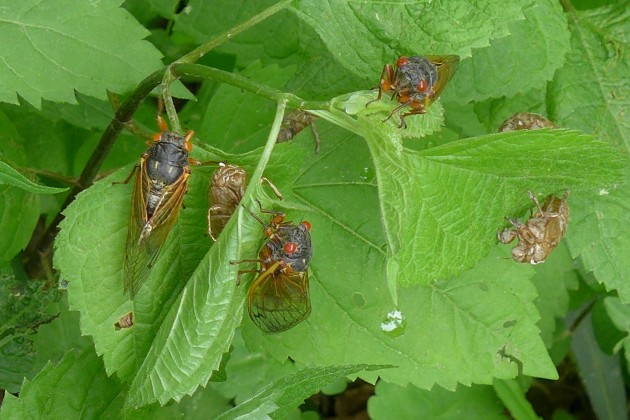
- Sometimes their wings don’t unfurl properly as shown on the bug below.
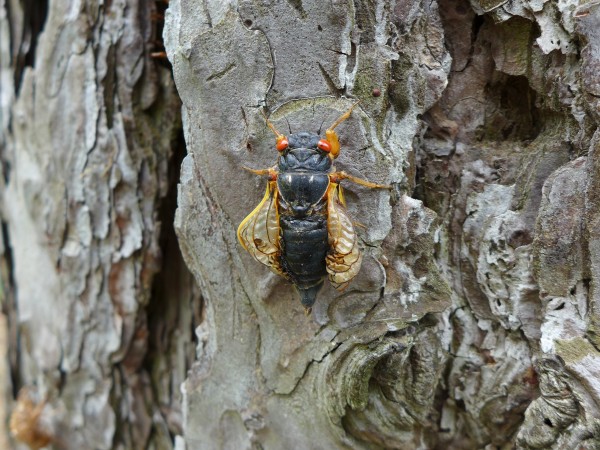
- There are so many of them that later arrivals knock the old shells off to the ground.
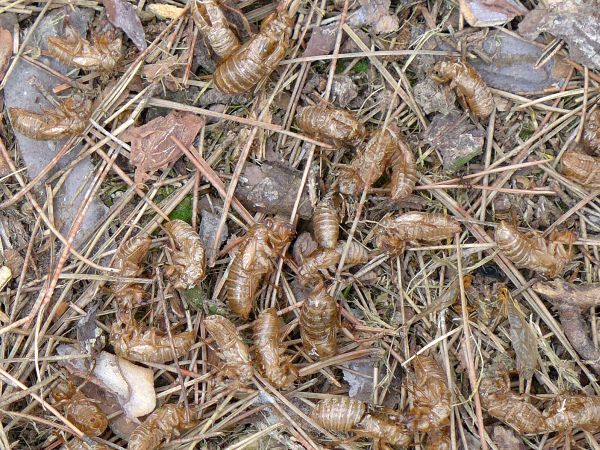
- It takes about a week for their bodies to stiffen enough to make their distinctive call. When they’re ready the males congregate in trees and vibrate their tymbals to attract the females. Each bug is individually loud. Thousands of them are overwhelming. Here’s the sound from a cicada-filled tree. The audio sounds like a hiss but it’s actually bugs.
- After they mate the females rip a long slit in the bark of a twig and lay up to 600 eggs. Weeks later, the eggs hatch and the nymphs fall to the dirt where they burrow underground to live for 17 years.
- Later this summer you’ll know cicadas were here when you see brown leaves on branch tips.
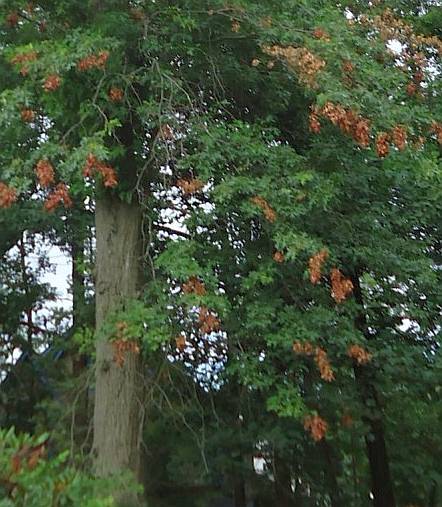
For lots more information about cicadas, visit the Cicada Mania website or this Allegheny Front episode Everything You Need to Know About This Year’s Mass Cicada Emergence.
Magicicadas are weird and magical.
p.s. Watch this cool video of the cicadas’ life cycle, billed on Facebook as “Cicada Time-Lapse Video Will Make You Cry.“
(cicada photos and video by Kate St. John. photo of tree with brown tips from Wikimedia Commons)
If you are interested in becoming a citizen scientist and helping researchers, you can collect cicadas and send them to the Urban Buzz team at North Carolina State University. Here is more information: http://studentsdiscover.org/lesson/urban-buzz-citizen-science-with-cicadas/
Great article,Kate!
I saw one of these guys at Raccoon Creek State Park last Saturday (May 29) but I think he was an early outlier?
Sara, I last saw a big emergence at Raccoon in 2002. I’m expecting that group to show up 3 yrs from now.
I’d never thought to look up why they emerge en masse…now I know. Of course it makes sense to just overwhelm your predators.
Also, getting a good chuckle from the autoincorrect in your previous reply. Group became grep…what a personalized correction!
Thanks for the heads up, Peter. Grep is now group.
Hi Kate,
Thanks for this fascinating article…I’ll def be on the lookout this year.
Do you recall finding and holding one of those bugs at Marcy’s one year? Can’t recall if it was a picnic or a bird banding but I remember seeing you with one of your hats and a long white shirt and you were holding a bug and been looking for that photo but it must not be in my files but on the old FB site in “albums” but I do have a cropped or closeup of the bug in your hand if I can post it here or will send it in a message. Marge
Oh, that sound reminds me of my East coast days. Now all I need are some fireflies.
Janet, I saw my first fireflies yesterday!